10 Virtual Reality Products That Took Us To Another World At Mobile World Congress 2016
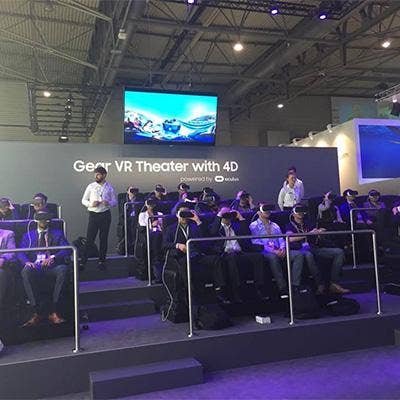
Breaking (Virtual) Boundaries At MWC
While smartphone launches were still the highlight of Mobile World Congress 2016, a new technology stole the show -- virtual reality.
We all know the basics behind virtual reality -- users can strap on headsets like Samsung's Gear VR and enter a visually stimulating new 3-D world.
But companies like Intel and Facebook are trying to push the boundaries on virtual and augmented reality, and new applications beyond consumer gaming popped up at the popular mobile show in Barcelona, Spain this year -- from social networking through 3-D virtual experiences, to using augmented reality to track fitness and health right in front of the user's eyes.
Following are 10 virtual reality platforms we saw at Mobile World Congress this year.
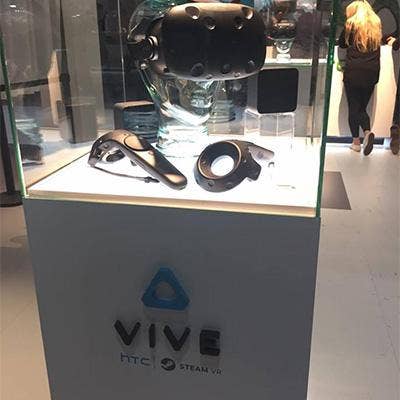
HTC Displays The Consumer Version Of Its HTC Vive VR Headset
HTC gave Mobile World Congress attendees a first look at the consumer version of its virtual reality headset, the HTC VR. This headset already has a price -- $800 -- and a release date of April.
The consumer version of the set has a Vive branding on the front, as opposed to the HTC branding seen on the Vive Pre. The headband design contains a cutout for keeping the Vive's cables in order. The lighthouse tracking boxes also contain a more high-end finish.
HTC's Vive demonstration allowed users to paint in the virtual world, and the company tracked painting on a computer to show those who weren't using the headset what was happening in the virtual world.
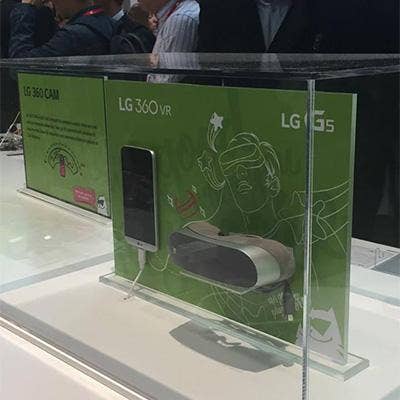
LG's 360 Virtual Reality Goggles Are The Company's First Attempt At VR
LG released a 360-degree virtual reality camera and headset as its first foray into the developing VR world.
The 360 VR connects to the LG G5 smartphone through a USB-C cable and simulates a 130-inch TV screen through its 360-degree camera, equipped with two 13-megapixel wide-angle cameras. LG also boasts its headset is one-third lighter than other VR devices.
The headset itself is still in the development phase, and LG has not announced pricing or availability for its new virtual reality product.
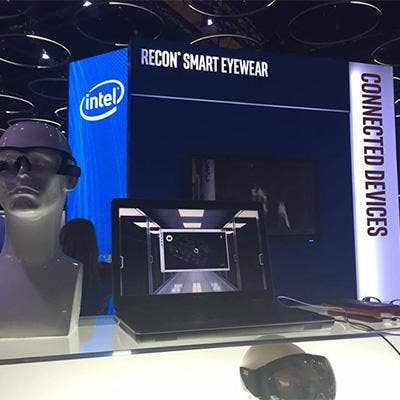
Intel Recon Jet Is A Headset That Tracks Exercise
Intel showcased Recon Jet, a headset that tracks exercise, at Mobile World Congress. The Recon Jet headset looks similar to Google Glass, and contains GPS, gyro sensors, and Bluetooth technology to track the users and show information during the workout.
The headset, powered by a 1 GHz dual-core processor, displays the pace, distance and duration of the workout. These notifications are shown on an embedded display attached to the headset. The Android-based glasses are currently available for $500.
Also at the show, Recon Instruments, which is a division of Intel, announced it has joined forces with APX Labs to develop smart safety glasses for field service, maintenance, and manufacturing-based enterprise clients.
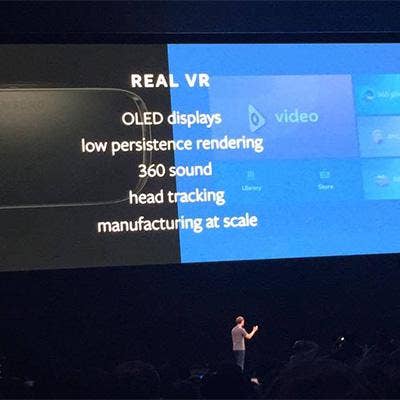
Virtual Reality -- For Facebook?
Mark Zuckerberg made a surprise appearance during Samsung's Unpacked event, which took place Sunday night before the official start of Mobile World Congress, to discuss virtual reality. The Facebook CEO talked about the importance of virtual reality, which has been a hot topic at Mobile World Congress as companies like LG and HTC demonstrate their VR platforms on the show floor.
Zuckerberg said Facebook will up the quality of its 360-degree videos on the social networking site while creating a new group to make other innovative content for virtual reality headsets. This means that virtual reality could grow beyond consumer games to reach an important and potentially breakthrough application -- social networking.
Facebook's Oculus Rift, a head-mounted display for immersive technology, is still in development. Samsung's $99 Gear VR headset, which uses Oculus technology, was released in November.
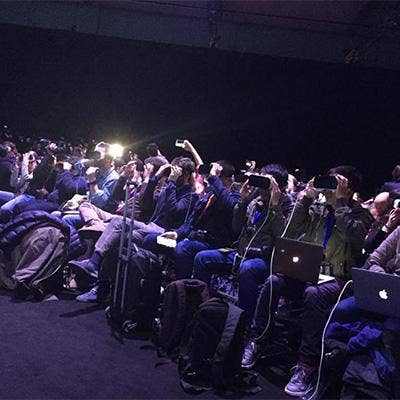
Samsung Looks Beyond Consumer Applications For The Gear VR
Samsung's Gear VR, a headset powered by Oculus that is currently on the market for less than $99, was displayed for audiences to try out at Mobile World Congress.
However, beyond the company's classic rollercoaster virtual reality showcasing at the conference, Samsung told us there are important enterprise applications for its headset as well, particularly in niche markets like real estate and advertising.
’With the Gear VR headset and the camera, real estate agents can help customers view homes without even having to visit them, through taking virtual tours around the house,’ said a Samsung spokesperson. The same functions apply to advertising -- consumers will be able to view ads in a virtual world.
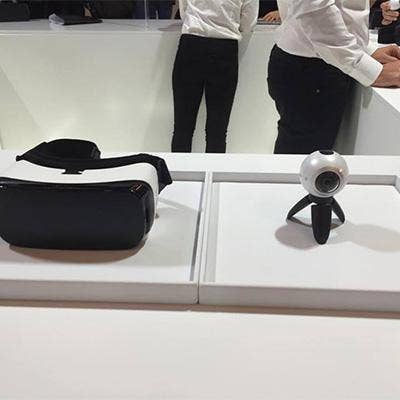
Samsung Gear 360 -- For Creating Virtual Reality Experiences
Samsung first dipped into virtual reality with its Gear VR Headset, but now it wants to actually let users create their own virtual reality experiences with the Gear 360 camera.
The Gear camera, a sphere with an eyeball-like front, allows users to shoot 360-degree video. The camera shoots 360-degree images, which the user can then pull from the device and use a companion app, available only on the Samsung Galaxy S7 and Galaxy S7 Edge, to upload. These files can also be viewed on Samsung's Gear VR for a virtual reality experience with different images. While pricing for this product was not yet announced, it will be available in the second quarter of this year.
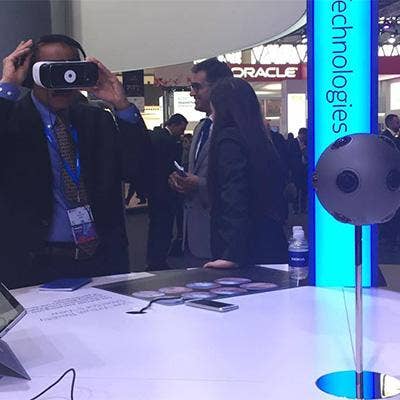
The Nokia Ozo Touts VR Production For Directors -- And A $60,000 Price Tag
While products like Samsung's $99 Gear VR seek to normalize virtual reality, Nokia appeals to a different audience with its pricey Ozo camera -- those who want to film futuristic virtual reality videos.
Ozo's camera is professional and not intended for consumer use -- and that is reflected in its $60,000 price tag.
From the outside, this product just looks like a sphere -- but it can capture 360-degree video and features surround sound with interactive monitoring. Users can then see and hear everything Ozo captures with their VR monitor output, which provides directors real-time interactive feedback of cast performances.
One single video file in the Ozo stores all video and audio data, and the product eliminates the nest of cables some VR devices have with just one simple output cable.
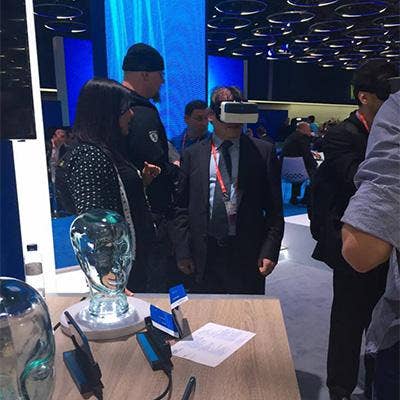
Intel RealSense Brings New Depths To VR
Intel RealSense, which the chip company demonstrated at Mobile World Congress, isn't anything new -- but with the new level of VR at the show, this technology has new meaning by bringing ’human-like senses’ to devices.
The Intel RealSense 3-D depth camera, introduced at the 2014 Consumer Electronics Show, is powered by ultrathin processors and a depth sensor to provide enhanced 3-D camera features. Using this technology in VR, consumers can use the camera's spatial technology to pick up or drop various objects in the virtual room, allowing them to actually interact with the VR world itself. RealSense is currently on the market and is mostly used in PCs for facial recognition and finger tracking.
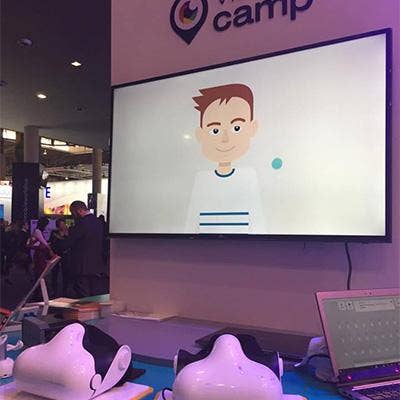
Visual Camp Makes Real-Life Ads Clickable In Virtual Reality
The founders of Korean startup Visual Camp have dismissed the idea of using virtual reality for gaming and instead set their sights on one application that can be monetized.
The company's technology will make real-life ads on Google Street View clickable in virtual reality. Visual Camp has worked on pinpointing billboards on Google Street View and creating analytics software to track how long headset wearers look at ads. The company then provides that data for content makers, platform providers and advertisers to help with advertising consultancy efforts. This technology is still new and in development.
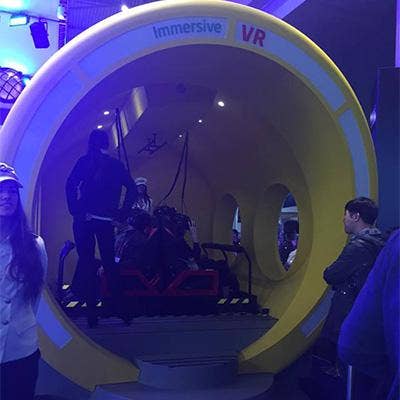
SK Telecom Demonstrates VR Games -- Over 5G
SK Telecom showcased its fifth generation technology, which enables 20Gpbs transmission speed over the air, in an interesting way -- virtual reality.
While many consumers don't realize it, Virtual Reality games transmits massive amounts of data, particularly in VR live 360 video streaming, so SK Telecom's 5G platform is the perfect example of how this telecommunications tool can enable infrastructure of futuristic technologies.
At SK Telecom's booth, Mobile World Congress attendees were able to take a virtual reality trip in a submarine with technology running on 5G.